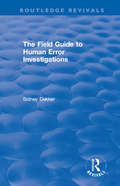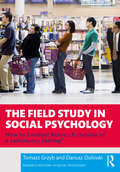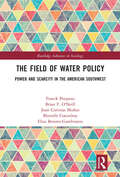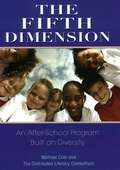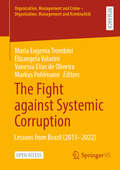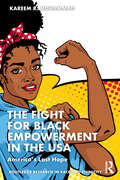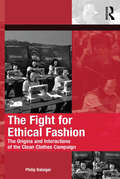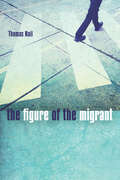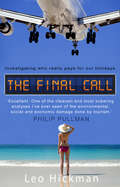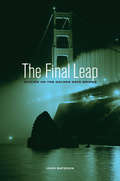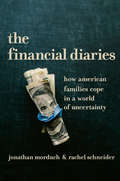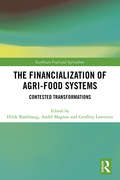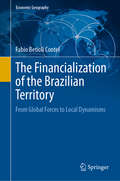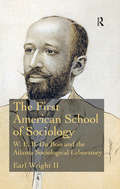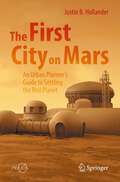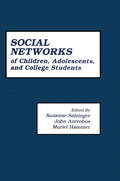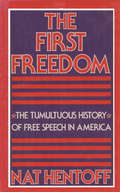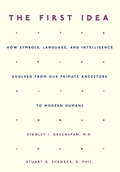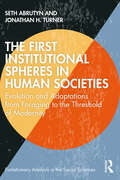- Table View
- List View
The Fiefdom Syndrome: The Turf Battles That Undermine Careers and Companies - And How to Overcome Them
by Robert J. HerboldIs your company threatened by turf battles, shut out of key data sources by territorial "lords," or ravaged by hundreds of "micro-companies"? If so, your organization may be suffering from a potentially crippling case of "Fiefdom Syndrome. "
The Field Guide to Human Error Investigations (Routledge Revivals)
by Sidney DekkerThis title was first published in 2002: This field guide assesses two views of human error - the old view, in which human error becomes the cause of an incident or accident, or the new view, in which human error is merely a symptom of deeper trouble within the system. The two parts of this guide concentrate on each view, leading towards an appreciation of the new view, in which human error is the starting point of an investigation, rather than its conclusion. The second part of this guide focuses on the circumstances which unfold around people, which causes their assessments and actions to change accordingly. It shows how to "reverse engineer" human error, which, like any other componant, needs to be put back together in a mishap investigation.
The Field Guide to Understanding 'Human Error': Second Edtion
by Sidney DekkerWhen faced with a ’human error’ problem, you may be tempted to ask 'Why didn’t these people watch out better?' Or, 'How can I get my people more engaged in safety?' You might think you can solve your safety problems by telling your people to be more careful, by reprimanding the miscreants, by issuing a new rule or procedure and demanding compliance. These are all expressions of 'The Bad Apple Theory' where you believe your system is basically safe if it were not for those few unreliable people in it. Building on its successful predecessors, the third edition of The Field Guide to Understanding ’Human Error’ will help you understand a new way of dealing with a perceived 'human error' problem in your organization. It will help you trace how your organization juggles inherent trade-offs between safety and other pressures and expectations, suggesting that you are not the custodian of an already safe system. It will encourage you to start looking more closely at the performance that others may still call 'human error', allowing you to discover how your people create safety through practice, at all levels of your organization, mostly successfully, under the pressure of resource constraints and multiple conflicting goals. The Field Guide to Understanding 'Human Error' will help you understand how to move beyond 'human error'; how to understand accidents; how to do better investigations; how to understand and improve your safety work. You will be invited to think creatively and differently about the safety issues you and your organization face. In each, you will find possibilities for a new language, for different concepts, and for new leverage points to influence your own thinking and practice, as well as that of your colleagues and organization. If you are faced with a ’human error’ problem, abandon the fallacy of a quick fix. Read this book.
The Field Study in Social Psychology: How to Conduct Research Outside of a Laboratory Setting? (Research Methods in Social Psychology)
by Dariusz Dolinski Tomasz GrzybThis unique book offers a comprehensive introduction to field studies as a research method in social psychology, demonstrating that field studies are an important element of contemporary social psychology, and encourages its usage in a methodologically correct and ethical manner. The authors demonstrate that field studies are an important and a much-needed element of contemporary social psychology and that abandoning this method would be at a great loss for the field. Examining successful examples of field studies, including those by Sherif and Sherif, studies of obedience by Hofling, or the studies of stereotypes of the Chinese by LaPiere, they explore the advantages and limitations of the field study method, whilst offering practical guidance on how it can be used in experiments now and in the future. Covering the history and decline of the field study method, particularly in the wake of the replication crisis, the text argues for the revival the field study method by demonstrating the importance of studying the behaviour of subjects in real life, rather than laboratory conditions. In fact, the results point to certain variables and research phenomena that can only be captured using field studies. In the final section, the authors also explain the methods to follow when conducting field studies, to make sure they are methodologically correct and meet the criteria of contemporary expectations regarding statistical calculations, while also ensuring that they are conducted ethically. This is an essential reading for graduate and undergraduate students and academics in social psychology taking courses on methodology, and researchers looking to use field study methods in their research.
The Field of Water Policy: Power and Scarcity in the American Southwest (Routledge Advances in Sociology)
by Franck Poupeau Brian F. O'Neill Joan Cortinas Muñoz Murielle Coeurdray Eliza Benites-GambirazioBringing together the analysis of a diverse team of social scientists, this book proposes a new approach to environmental problems. Cutting through the fragmented perspectives on water crises, it seeks to shift the analytic perspectives on water policy by looking at the social logics behind environmental issues. Most importantly, it analyzes the dynamic influences on water management, as well as the social and institutional forces that orient water and conservation policies. The first work of its kind, The Field of Water Policy: Power and Scarcity in the American Southwest brings the tools of Pierre Bourdieu’s field sociology to bear on a moment of environmental crisis, with a study of the logics of water policy in the American Southwest, a region that allows us to see the contest over the management of scarce resources in a context of lasting drought. As such, it will appeal to scholars in the social and political sciences with interests in the environment and the management of natural resources.
The Fifth Dimension: An After-School Program Built on Diversity
by Michael Cole Distributive Literacy ConsortiumThe significant increase in the number of working mothers over the last twenty years has led to widespread worries about the plight of “latchkey kids,” who return from school each day to empty homes. Concerned that unsupervised children might be at greater risk of delinquency, schools and communities across the nation began providing after-school activities. But many of these programs were hastily devised with little understanding of what constitutes a quality program that meets children’s developmental needs. The Fifth Dimension explores and evaluates one of the country’s most successful and innovative after-school programs, providing insightful and practical lessons about what works and doesn’t work after-school. The Fifth Dimension program was established in the 1980s as a partnership between community centers and local colleges to establish an educational after-school program. With an emphasis on diversity and computer technology, the program incorporates the latest theories about child development and gives college students the opportunity to apply their textbook understanding of child development to real learning environments. The Fifth Dimension explores the design, implementation, and evaluation of this thriving program. The authors attribute the success of the Fifth Dimension to several factors. First, the program offers a balance of intellectually enriching exercises with development enhancing games. Second, by engaging undergraduates as active participants in both learning and social activities, the program gives local community organizations a large infusion of high-quality help for their educational efforts. Third, by rewarding children for their achievements and good behavior with greater flexibility in choosing their own schedules, the Fifth Dimension acts as a powerful, enduring motivator. The Fifth Dimension program serves as a model for what an enriching after-school program can be. The product of years of innovation and careful assessment, The Fifth Dimension is a valuable resource for all who are interested in developing successful community-based learning programs.
The Fifth Discipline Fieldbook: Strategies for Building a Learning Organization
by Bryan Smith Art Kleiner Peter M. Senge Charlotte Roberts Richard RossThis book is for people who want to learn, especially while treading the fertile ground of organizational life. The idea of a learning organization has become increasingly prominent over the last few years. This book's predecessor, The Fifth Discipline, helped give voice to that wave on interest by presenting the conceptual underpinnings of the work of building learning organizations. Since its publication in 1990, Peter Senge et al. have talked to thousands of people who have committed themselves to the idea of building a learning organization. However, many of them are still not certain how to put the concepts into practice, asking questions like 'What do we do Monday morning? How do we navigate past the many barriers and roadblocks to collective learning? How do we discover exactly what kind of learning organization we wish to create? How do we get started?' No one person has THE answers to these questions, but there are answers. It is time for a 'fieldbook' - a collection of notes, reflections and exercised 'from the field'. This volume contains 172 pieces of writing by 67 authors, describing tools and methods, stories and reflections, guiding ideas and exercises and resources which people are using effectively.
The Fight Against Big Tobacco: The Movement, the State and the Public's Health (Social Problems And Social Issues Ser.)
by Mark WolfsonTobacco control leaders were extremely proud of the movement's achievements in the state of Minnesota. In sharing their perspectives and experiences with Mark Wolfson, they found a way of making sure that the story would get told. His training in social movements had given him an appreciation of the importance of understanding the social infrastructure on which movements are built, and Minnesota had built heavily on the infrastructure of health care and public health. What became apparent is that the struggle against the tobacco industry in Minnesota involved a close, collaborative relationship between government (or "state") actors and the leaders of the tobacco control movement.Wolfson develops both of these themes: building on the infrastructure of health, and state-movement interpenetration, to understand the emergence, growth, and outcomes of the tobacco control movement in Minnesota. He focuses on the advantages and constraints associated with these two related themes. He goes beyond the case study method to assess the generalizability of the pattern, and whether the same sort of movement can be used by other states in North America, and even in other countries and their social movements.How has the tobacco control movement become such a significant and successful force in shaping public policy, social norms, and the habits of millions of Americans? In this first such detailed study by a sociologist, Wolfson documents how the movement has grown over nearly three decades by building an infrastructure of health organizations and health professionals, and by fostering relationships with government. Rich in survey data, extensive interviews, and archival sources, this text is essential reading for courses in social problems, social movements, and public health. The general reader will also find it engaging, given the issues of tobacco use as an addiction and a social problem.
The Fight Over Food: Producers, Consumers, and Activists Challenge the Global Food System (Rural Studies)
by Wynne Wright Gerad Middendorf“One problem with the food system is that price is the bottom line rather than having the bottom line be land stewardship, an appreciation for the environmental and social value of small-scale family farms, or for organically grown produce.” —Interview with farmer in Skagit County, WashingtonFor much of the later twentieth century, food has been abundant and convenient for most residents of advanced industrial societies. The luxury of taking the safety and dependability of food for granted pushed it to the back burner in the consciousness of many. Increasingly, however, this once taken-for-granted food system is coming under question on issues such as the humane treatment of animals, genetically engineered foods, and social and environmental justice. Many consumers are no longer content with buying into the mainstream, commodity-driven food market on which they once depended. Resistance has emerged in diverse forms, from protests at the opening of McDonald’s restaurants worldwide to ever-greater interest in alternatives, such as CSAs (community-supported agriculture), fair trade, and organic foods. The food system is increasingly becoming an arena of struggle that reflects larger changes in societal values and norms, as expectations are moving beyond the desire for affordable, convenient foods to a need for healthy and environmentally sound alternatives. In this book, leading scholars and scholar-activists provide case studies that illuminate the complexities and contradictions that surround the emergence of a “new day” in agriculture.The essays found in The Fight Over Food analyze and evaluate both the theoretical and historical contexts of the agrifood system and the ways in which trends of individual action and collective activity have led to an “accumulation of resistance” that greatly affects the mainstream market of food production. The overarching theme that integrates the case studies is the idea of human agency and the ways in which people purposefully and creatively generate new forms of action or resistance to facilitate social changes within the structure of predominant cultural norms. Together these studies examine whether these combined efforts will have the strength to create significant and enduring transformations in the food system.
The Fight Over Food: Producers, Consumers, and Activists Challenge the Global Food System (Rural Studies)
by Wynne Wright Gerad Middendorf“One problem with the food system is that price is the bottom line rather than having the bottom line be land stewardship, an appreciation for the environmental and social value of small-scale family farms, or for organically grown produce.” —Interview with farmer in Skagit County, WashingtonFor much of the later twentieth century, food has been abundant and convenient for most residents of advanced industrial societies. The luxury of taking the safety and dependability of food for granted pushed it to the back burner in the consciousness of many. Increasingly, however, this once taken-for-granted food system is coming under question on issues such as the humane treatment of animals, genetically engineered foods, and social and environmental justice. Many consumers are no longer content with buying into the mainstream, commodity-driven food market on which they once depended. Resistance has emerged in diverse forms, from protests at the opening of McDonald’s restaurants worldwide to ever-greater interest in alternatives, such as CSAs (community-supported agriculture), fair trade, and organic foods. The food system is increasingly becoming an arena of struggle that reflects larger changes in societal values and norms, as expectations are moving beyond the desire for affordable, convenient foods to a need for healthy and environmentally sound alternatives. In this book, leading scholars and scholar-activists provide case studies that illuminate the complexities and contradictions that surround the emergence of a “new day” in agriculture.The essays found in The Fight Over Food analyze and evaluate both the theoretical and historical contexts of the agrifood system and the ways in which trends of individual action and collective activity have led to an “accumulation of resistance” that greatly affects the mainstream market of food production. The overarching theme that integrates the case studies is the idea of human agency and the ways in which people purposefully and creatively generate new forms of action or resistance to facilitate social changes within the structure of predominant cultural norms. Together these studies examine whether these combined efforts will have the strength to create significant and enduring transformations in the food system.
The Fight against Systemic Corruption: Lessons from Brazil (2013–2022) (Organization, Management and Crime - Organisation, Management und Kriminalität)
by Markus Pohlmann Elizangela Valarini Maria Eugenia Trombini Vanessa Elias de OliveiraThis open access book examines the interplay between public and private sectors in Latin America's biggest market. It is the result of the binational research project “Organizational Crime and Systemic Corruption in Brazil” funded by the DFG and FAPESP (2018-2023). Its contributions analyze anticorruption, political finance, and how for-profit organizations manage illegality.
The Fight for Black Empowerment in the USA: America’s Last Hope (Routledge Research in Race and Ethnicity #1)
by Kareem R. MuhammadThis book advances the view that concentrated black power is the backbone of the Democratic Party and, as such, black empowerment represents the last hope for the US both domestically and internationally. Through analyses of secondary data, historical archives, and a variety of political and economic statistical indicators, it examines the relationship between black empowerment and America's global stature across its history, exploring the socio-historical context in which obstacles to black empowerment have occurred and the strategies that have been adopted across time for its realization. An examination of what Black political, legal, economic and cultural power looks like, The Fight for Black Empowerment in the USA makes an urgent call for the up-lift and empowerment of the black population, without which the nation faces irreversible political and economic dysfunction domestically, and a loss of its status as a global superpower. As such, it will appeal to scholars across the social sciences with interests in racial and ethnic inequalities and contemporary American society.
The Fight for Ethical Fashion: The Origins and Interactions of the Clean Clothes Campaign (The Mobilization Series on Social Movements, Protest, and Culture)
by Philip BalsigerFrom consumer boycotts and buycotts to social movement campaigns, examples of individual and collective actors forging political struggles on markets are manifold. The clothing market has been a privileged site for such contention, with global clothing brands and retailers being targets of consumer mobilization for the past 20 years. Labels and product lines now attest for the ethical quality of clothes, which has, in turn, given rise to ethical fashion. The Fight for Ethical Fashion unveils the actors and processes that have driven this market transformation through a detailed study of the Europe-wide coordinated campaign on workers’ rights in the global textile industry - the Clean Clothes Campaign. Drawing on insights from qualitative fieldwork using a wide range of empirical sources, Philip Balsiger traces the emergence of this campaign back to the rise of ’consumer campaigns’ and shows how tactics were adapted to market contexts in order to have retailers adopt and monitor codes of conduct. By comparing the interactions between campaigners and their corporate targets in Switzerland and France (two countries with a very different history of consumer mobilization for political issues), this ground-breaking book also reveals how one campaign can provoke contrasting reactions and forms of market change.
The Figure of the Migrant
by Thomas NailThis book offers a much-needed new political theory of an old phenomenon. The last decade alone has marked the highest number of migrations in recorded history. Constrained by environmental, economic, and political instability, scores of people are on the move. But other sorts of changes--from global tourism to undocumented labor--have led to the fact that to some extent, we are all becoming migrants. The migrant has become the political figure of our time. Rather than viewing migration as the exception to the rule of political fixity and citizenship, Thomas Nail reinterprets the history of political power from the perspective of the movement that defines the migrant in the first place. Applying his "kinopolitics" to several major historical conditions (territorial, political, juridical, and economic) and figures of migration (the nomad, the barbarian, the vagabond, and the proletariat), he provides fresh tools for the analysis of contemporary migration.
The Final Call: Investigating Who Really Pays For Our Holidays
by Leo HickmanNo industry in the world employs more people or is the world's largest foreign currency earner than tourism. Long billed as the cleanest industry for developing countries to invest in, tourism seems to offer everyone involved a positive experience.This is the official line, anyway. In truth, the reality is much more complex . For The Final Call Hickman travels the world on a range of holidays and finds that behind the sunny facade of pools, smiling locals, sightseeing trips and exquisite cuisine is an ugly reality and it is spreading unchecked to all corners of the globe. But none of us are going to stop holidaying and at the heart of this is a heartfelt attempt to discover the best way to holiday wherever you are.
The Final Leap: Suicide on the Golden Gate Bridge
by John BatesonThe Golden Gate Bridge is one of the most beautiful and most photographed structures in the world. It's also the most deadly. Since it opened in 1937, more than 1,500 people have died jumping off the bridge, making it the top suicide site on earth. It's also the only international landmark without a suicide barrier. Weaving drama, tragedy, and politics against the backdrop of a world-famous city, The Final Leap is the first book ever written about Golden Gate Bridge suicides. John Bateson leads us on a fascinating journey that uncovers the reasons for the design decision that led to so many deaths, provides insight into the phenomenon of suicide, and examines arguments for and against a suicide barrier. He tells the stories of those who have died, the few who have survived, and those who have been affected--from loving families to the Coast Guard, from the coroner to suicide prevention advocates.
The Financial Diaries: How American Families Cope in a World of Uncertainty
by Jonathan Morduch Rachel SchneiderWhat the financial diaries of working-class families reveal about economic stresses, why they happen, and what policies might reduce themDeep within the American Dream lies the belief that hard work and steady saving will ensure a comfortable retirement and a better life for one's children. But in a nation experiencing unprecedented prosperity, even for many families who seem to be doing everything right, this ideal is still out of reach.In The Financial Diaries, Jonathan Morduch and Rachel Schneider draw on the groundbreaking U.S. Financial Diaries, which follow the lives of 235 low- and middle-income families as they navigate through a year. Through the Diaries, Morduch and Schneider challenge popular assumptions about how Americans earn, spend, borrow, and save—and they identify the true causes of distress and inequality for many working Americans. We meet real people, ranging from a casino dealer to a street vendor to a tax preparer, who open up their lives and illustrate a world of financial uncertainty in which even limited financial success requires imaginative—and often costly—coping strategies. Morduch and Schneider detail what families are doing to help themselves and describe new policies and technologies that will improve stability for those who need it most.Combining hard facts with personal stories, The Financial Diaries presents an unparalleled inside look at the economic stresses of today's families and offers powerful, fresh ideas for solving them.
The Financialization of Agri-Food Systems: Contested Transformations (Earthscan Food and Agriculture)
by Geoffrey Lawrence Hilde Bjorkhaug André MagnanFinancialization is the increased influence of financial actors and logics on social and economic life, and is one of the key drivers transforming food systems and rural economies around the world. The premise of this book is that the actions of financial actors, and their financial logics, are transforming agri-food systems in profound ways. It is shown that although financialization is a powerful dynamic, some recent developments suggest that the rollout of financialization is contradictory and uneven in different spaces and markets. The book examines cases in which state regulation or re-regulation and social movement resistance are setting roadblocks or speed bumps in the path of financialization, resulting in a ‘cooling off’ of investment, as well as the other side of the argument where there is evidence of a ‘heating up’. The authors address not only the limits to financialization, but also the mechanisms through which financial entities are able to penetrate and re-shape agri-food industries. This book provides both a comparative analysis of financialization blending, and empirical findings with conceptual insights. It explores the connection between financialization, food systems, and rural transformation by critically examining: the concept of financialization and how food and farming are being financialized; the impacts of financialization in the food industry; and financialization in farming and forestry – along with the impacts this has on rural people and communities. This is a timely book, bringing together concrete case studies, from around the globe, to reveal the operations and impacts of finance capital in the ‘space’ of agri-food.
The Financialization of the Brazilian Territory: From Global Forces to Local Dynamisms (Economic Geography)
by Fabio Betioli ContelThe book analyzes the financialization of the Brazilian territory to identify its main actors, technical systems and processes. The work is divided into three parts, which correspond to the three main scales of analysis of the national financial system: 1. the global scale, which defines the relative position of Brazil in the international division of financial work, emphasizing the role of São Paulo as an international financial centre; 2 the national level, which demonstrates the recent development of the financial and banking system (after 1964), with emphasis on the location and regionalization of bank headquarters and branches, as well as the new electronic channels for the provision of banking services (ATMs, points-of-sales, mobile and Internet banking); and 3. the local scale, which shows how these new financial agents and technical systems affect the Brazilian urban population, emphasizing the indebtedness of the lower income classes, as well as the emergence of alternative ways of using finance, such as fintechs, credit cooperatives and community banks.
The First American School of Sociology: W.E.B. Du Bois and the Atlanta Sociological Laboratory
by Earl Wright IIThis book offers an original and rounded examination of the origin and sociological contributions of one of the most significant, yet continuously ignored, programs of social science research ever established in the United States: the Atlanta Sociological Laboratory. Under the leadership of W.E.B. Du Bois, this unit at Atlanta University made extensive contributions to the discipline which, as the author demonstrates, extend beyond 'race studies' to include founding the first American school of sociology, establishing the first program of urban sociological research, conducting the first sociological study on religion in the United States, and developing methodological advances that remain in use today. However, all of these accomplishments have subsequently been attributed, erroneously, to White sociologists at predominately White institutions, while the Atlanta Sociological Laboratory remains sociologically ignored and marginalized. Placing the achievements of the Du Bois led Atlanta Sociological Laboratory in context, the author contends that American Jim Crow racism and segregation caused the school to become marginalized and ignored instead of becoming recognized as one the most significant early departments of sociology in the United States. Illuminating the sociological activities - and marginalization - of a group of African American scholars from a small African American institution of higher learning in the Deep South - whose works deserve to be canonized alongside those of their late nineteenth and early twentieth century peers - this book will appeal to all scholars with interests in the history of sociology and its development as a discipline, race and ethnicity, research methodology, the sociology of the south, and urban sociology.
The First City on Mars: An Urban Planner’s Guide to Settling the Red Planet (Springer Praxis Books)
by Justin B. HollanderHundreds of novels, films, and TV shows have speculated about what it would be like for us Earthlings to build cities on Mars. To make it a reality, however, these dreamers are in sore need of additional conceptual tools in their belt—particularly, a rich knowledge of city planning and design. Enter award-winning author and Tufts University professor, Justin Hollander. In this book, he draws on his experience as an urban planner and researcher of human settlements to provide a thoughtful exploration of what a city on Mars might actually look like. Exploring the residential, commercial, industrial, and infrastructure elements of such an outpost, the book is able to paint a vivid picture of how a Martian community would function – the layout of its public spaces, the arrangement of its buildings, its transportation network, and many more crucial aspects of daily life on another planet. Dr. Hollander then brings all these lessons to life through his own rendered plan for “Aleph,” one of many possible designs for the first city on Mars. Featuring a plethora of detailed, cutting-edge illustrations and blueprints for Martian settlements, this book at once inspires and grounds the adventurous spirit. It is a novel addition to the current planning underway to colonize the Red Planet, providing a rich review of how we have historically overcome challenging environments and what the broader lessons of urban planning can offer to the extraordinary challenge of building a permanent settlement on Mars.
The First Compendium of Social Network Research Focusing on Children and Young Adult: Social Networks of Children, Adolescents, and College Students
by Suzanne Salzinger John Antrobus Muriel HammerResearch on adult personal-social networks has contributed greatly to an understanding of mental health, illness, and responses to stress. Fueled by this successful research and a growing concern for today's youth, the contributors to this volume have conducted investigations into the functioning and structures of the social networks of toddlers, school-age children, adolescents, and college students. The editors of this volume move beyond vague generalizations about characteristic and behavior acquisition through socialization in childhood by applying a longitudinal perspective to the sampling of child, adolescent, and young-adult network research. Social Networks of Children, Adolescents, and College Students unites several major empirical studies of children's social networks, investigating the acquisition of specific behaviors from particular groups of individuals under certain conditions. Topics covered include: * the effects of social networks on child development and disorder * the relationship between social networks and coping with stress the role of friends or groups in positive socialization * Of special interest to practitioners, researchers, and advanced students are: * comparative data on children from other cultural groups and non-mainstream American youths descriptions and evaluations of methodologies * introductory materials by the editors commenting on the field and the research extensive bibliographies
The First Freedom: The Tumultuous History of Free Speech in America
by Nat HentoffA history of free speech in our country from earliest times to some of the controversial court cases of today involving school demonstrations and the right of Nazis to march.
The First Idea: How Symbols, Language, and Intelligence Evolved from our Primate Ancestors to Modern Humans
by Stanley I. Greenspan Stuart G. ShankerIn the childhood of every human being and at the dawn of human history there is an amazing and, until now, unexplained leap from simple genetically programmed behavior to language, symbolic thinking, and culture. In The First Idea, Stanley Greenspan and Stuart Shanker explore this missing link and offer brilliant new insights into two longstanding questions: how human beings first create symbols and how these abilities evolved and were transmitted across generations over millions of years. From fascinating research into the intelligence of both human infants and apes, they identify certain cultural practices that are vitally important if we are to have stable and reflective future societies.
The First Institutional Spheres in Human Societies: Evolution and Adaptations from Foraging to the Threshold of Modernity (Evolutionary Analysis in the Social Sciences)
by Jonathan H. Turner Seth AbrutynFew concepts are as central to sociology as institutions. Yet, like so many sociological concepts, institutions remain vaguely defined. This book expands a foundational definition of the institution, one which locates them as the basic building blocks of human societies—as structural and cultural machines for survival that make it possible to pass precious knowledge from one generation to the next, ensuring the survival of our species. The book extends this classic tradition by, first, applying advances in biological evolution, neuroscience, and primatology to explain the origins of human societies and, in particular, the first institutional sphere: kinship. The authors incorporate insights from natural sciences often marginalized in sociology, while highlighting the limitations of purely biogenetic, Darwinian explanations. Secondly, they build a vivid conceptual model of institutions and their central dynamics as the book charts the chronological evolution of kinship, polity, religion, law, and economy, discussing the biological evidence for the ubiquity of these institutions as evolutionary adaptations themselves.

